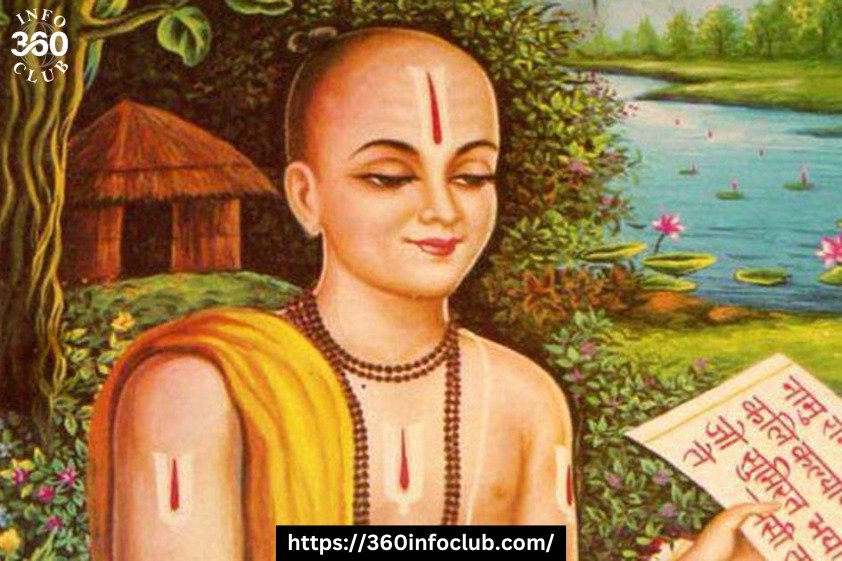What Is Ramcharitmanas? Tracing The Origins of Timeless Epic
Ramayana and RamcharitManas are Indian epics that tell the story of Rama’s journey on Earth as Lord Vishnu’s incarnation. But Ramayana and RamCharitManas differ greatly in many ways. Our discussion will focus on the differences between Ramayana and Ramcharitmanas.
1. Sage Valmiki wrote the Ramayana in the Sanskrit language in Treta Yuga. Sage Valmiki was Lord Ram’s contemporary.
At first, we wonder who wrote Ramcharitmanas and Ramcharitmanas written in which period? It was written in the Awadhi language by the great Awadhi poet Goswami Tulsidas in the Kaliyuga. Tulsidas lived during the 15th century AD (1511–1623).
2. As Ramayana is made up of two words, Rama and Aayanam (story), it means the story of Ram.
As RamCharitManas consists of three words – Ram, Charita (good deeds), and Manas (lake), its meaning is Lake of Ram’s good deeds.
3. Ramayana has seven chapters or Kandams listed as Balakandam, Ayodhyakandam, Aranyakandam, Kishkinda kandam, Sundara kandam, Yuddha kandam and Uttara kandam.
There are seven chapters in RamCharitManas/ RamCharitManas Kand as well, but Tulsidas changed Yuddha Kandam into Lanka Kand.
4. The Ramayana is written in ‘Slokas’ format, while the RamCharitManas is written in ‘Chaupais’ format. The Ramayana tells the story of Lord Ram and his journey from beginning to end.
RamCharitManas summarizes the Ramayana. Tulsidas acknowledges Valmiki in his book.
5. According to Ramayana, King Dasaratha had over 350 wives, with Kausalya, Kaikeyi, and Sumitra being the three principal wives.
In RamCharitManas, King Dasaratha only had three wives.
6. The Ramayana depicts Lord Hanuman as a Vanara tribesman. There are two words in Vanar – Van (forest) and Nar (man). Vanar is the name given to the tribes living in the forest in the Ramayana.
RamCharitManas depicts him as a monkey, and the word ‘Vanar’ is used to describe his species.
7. The Ramayana states that King Janaka did not hold Sita Swayamvar as a mass function. Rather, whenever a powerful person visited Janaka, he would show them Shiva Dhanusha (Bow of Shiva). When Vishwamitra visited Janaka with Rama and Lakshmana, Janaka showed Rama the bow. As soon as Lord Rama lifted the bow, he was married to Sita.
According to RamCharitManas, King Janaka organized a Swayamvar for Sita, during which the bow of Shiva was lifted. A person who can lift the bow without breaking it will be chosen as Sita’s husband. Rama was the only one who could lift the bow. During the lifting process, he broke it. When Parashurama heard this, he was angry, and Rama asked him to forgive him.
8. The abduction and suffering of Sita were real according to The Ramayana. Ravana kidnapped her and dragged her to his chariot. After rescuing Sita, Rama asks her to prove her purity by taking the Agni Pariksha.
RamCharitManas says the real Sita was never kidnapped. Rama foresees Sita’s abduction and creates the clone of Sita and sends the real Sita to Agni Deva. It was simply an exchange of clones of Sita with the real Sita through the Agni Pariksha.
9. Ramayana says Ravana came to fight Rama twice on the battlefield. Initially, he arrived when the war began. However, Rama left him alive after humiliating him. The second was that he was killed by Rama at the end of the war.
In RamCharitManas, Ravana appeared only once on the battlefield.
10. The Ramayana depicts Rama as “Maryada Purushottam,” or a man of excellent character. Throughout the story, he is shown as an exceptional human being.
The RamCharitManas portrays Rama as God incarnate, as the supreme being. There is a divine touch to his deeds. The actions he took were described as God’s righteous ways of eradicating evil.
11. At the end of the Ramayana, Rama drowns himself in the Saryu River due to his sorrow over Sita and Lakshmana’s absence. Lakshmana drowned himself in the Saryu river, and Sita went into Mother Earth.
RamCharitManas ends with Ram and Sita having twin
sons Lava and Kusha. There’s no mention of Lakshmana’s death or Sita’s disappearance.
Ramcharitmanas Gita Press
The popular Ramcharitmanas edition from Gorakhpur’s Gita Press has run out, as have most of its publications dealing with Hindu scriptures and deities.
This iconic institution has been credited by many with protecting and sustaining the Hindu faith. The low-priced publications, which were disparaged by the colonial regime and aggressive proselytizers, couldn’t meet the mammoth number of print orders before the consecration. On its website, Shri Ram devotees can download the entire Ramcharitmanas for 15 days to help them perform the rituals they have planned for the ceremony.
When a lot of people visit Ayodhya after Pran Pratishtha, they might bring Ramcharitmanas home as ‘prasad’. Since they publish in 15 languages and have 2,500 distributors, they have to consider their demands, since their livelihoods depend on it.







